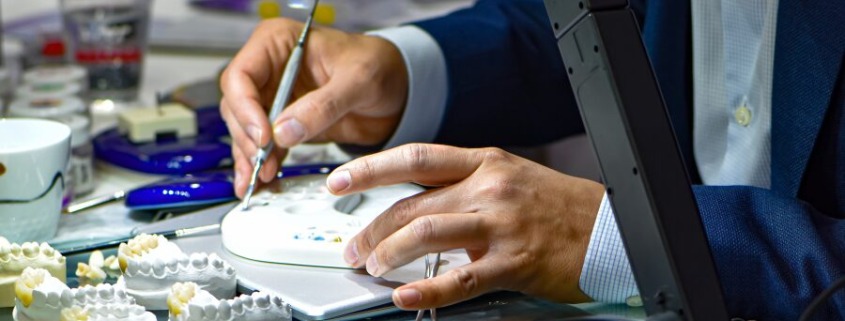Choosing the Best Materials for Crowns: A Guide for Dental Professionals
When it comes to restorative dentistry, selecting the best materials for crowns is crucial for both the functionality and aesthetics of your patient’s teeth.
Dental crowns are not only pivotal in restoring damaged teeth but also play a significant role in the overall oral health management of your patients.
In this comprehensive guide, we’ll explore the various materials available for dental crowns, their advantages, potential drawbacks, and suitability for different clinical scenarios.

Understanding the Basics of Dental Crowns
A dental crown is a cap placed over a tooth to restore its shape, size, strength, and improve its appearance.
Crowns are required when a tooth is significantly damaged or decayed, and they can also be used to improve the cosmetic appearance of teeth.
Before we delve deeper into materials, it’s important to understand that the choice of a crown must be tailored to the individual needs of each patient based on factors such as tooth location, patient’s bite, budget, and aesthetic requirements.
The Most Common Materials for Dental Crowns
Porcelain-Fused-to-Metal (PFM) Crowns
- Description and Usage: PFM crowns have been a popular choice because they offer both strength (from the metal) and a natural appearance (from the porcelain). They are often used for restoring both front and posterior teeth.
- Advantages:
- Aesthetic appeal: The porcelain can be matched to the color of the adjacent teeth.
- Durability: The underlying metal provides strong support, especially useful for posterior teeth.
- Disadvantages:
- Wear and tear: The porcelain part can wear down opposing teeth more than other types of crowns.
- Aesthetic issues: Sometimes, the metal underlying the crown’s porcelain can show through as a dark line at the gum line.
All-Ceramic or All-Porcelain Crowns
- Description and Usage: These crowns are made entirely from ceramic or porcelain and are favored for their ability to mimic the natural translucency of real teeth, making them ideal for anterior teeth restoration.
- Advantages:
- Best color match: Perfect for anterior teeth where aesthetics are more critical.
- Hypoallergenic: Suitable for patients with metal allergies.
- Disadvantages:
- Strength: May not be as strong as metal crowns, could chip or crack.
- Cost: Generally, these are more expensive than other types.
Gold and Metal Alloys Crowns
- Description and Usage: These crowns are composed of gold, copper and other metals. They offer durability and high resistance to wear, generally recommended for out-of-sight molars.
- Advantages:
- Durability: Extremely strong and can withstand biting and chewing forces.
- Less tooth structure needs to be removed: They can be made thinner than other types of crowns.
- Disadvantages:
- Aesthetic: The metallic color does not look like natural teeth, limiting their use to less visible areas in the mouth.
Zirconia Crowns
- Description and Usage: Zirconia is a newer type of ceramic that has excellent strength and can be made to look very much like natural dental enamel.
- Advantages:
- Strength and durability: Nearly as strong as metal, but with the aesthetic advantages of porcelain.
- Compatibility: Good choice for patients who have allergies to certain metals.
- Disadvantages:
- Wear on opposing teeth: Similar to porcelain, zirconia may cause more wear on opposing teeth than metal crowns.
Composite Resin Crowns
- Description and Usage: Composite resin crowns are less common and generally used as a temporary solution. They are made from a type of plastic dental composite.
- Advantages:
- Cost-effective: Generally the least expensive type of crown.
- Easy to fix: Damage to a composite crown can often be easily repaired.
- Disadvantages:
- Durability: More prone to fracture and wear over time than other types.
- Aesthetic degradation: They can stain more easily than porcelain or ceramic crowns.
So, what are the best materials for crowns?
Choosing the right material for dental crowns involves a detailed patient consultation where aspects such as lifestyle, budget, aesthetic expectations, and oral health status are considered.
It is imperative that dental professionals weigh these factors alongside the technical characteristics of the crown materials.
Here are some thought-provoking questions and considerations that may help in decision-making:
- How important are aesthetics to the patient?
- Does the patient have a metal allergy that would rule out certain types of crowns?
- What is the location of the tooth and the nature of the damage?
- What are the patient’s dietary habits and how might they affect the durability of the chosen crown material?
For dental professionals, the choice of materials for dental crowns is integral to the success of dental restoration procedures.
Each material offers unique pros and cons that align differently with patient needs and clinical demands. By understanding the nuances of each material, dentists can better serve their patients, ensuring functional and aesthetic success in dental restorations.
Remember, the ultimate goal is to restore not only the smile but also the confidence and quality of life of your patients.




Leave a Reply
Want to join the discussion?Feel free to contribute!